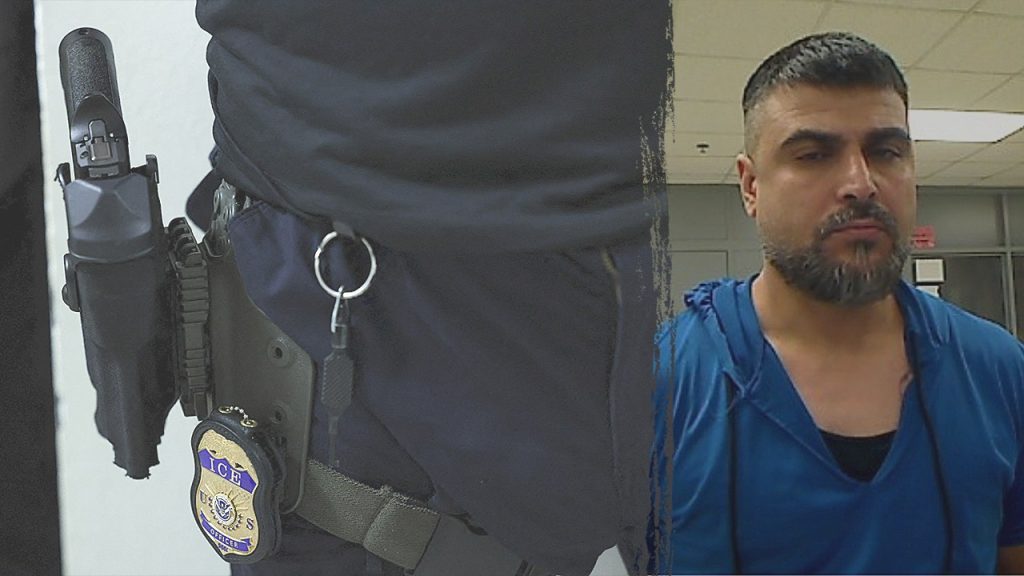Turkish National in Custody Following Confrontation with ICE Officers
In a recent incident that unfolded in Western New York, 39-year-old Saim Irgi, a Turkish citizen allegedly in the United States illegally, was arrested following a confrontation with Immigration and Customs Enforcement (ICE) officers. According to the statement released by ICE on Tuesday, the encounter turned violent when Irgi reportedly resisted arrest and attempted to take an officer’s taser while shouting “Allahu akbar” (Arabic for “God is great”). The incident highlights the ongoing challenges faced by immigration officials while carrying out enforcement operations, as well as raising questions about the handling of individuals with prior criminal histories who have entered the country illegally.
The confrontation began when ICE officers in Buffalo were conducting a targeted operation in Tonawanda. They spotted a vehicle leaving a residence connected to their investigation and decided to follow it. After initiating a traffic stop, the officers identified the driver as Irgi. What followed was a tense standoff, with Irgi reportedly refusing multiple commands to exit his vehicle. As the situation escalated, an officer drew a taser and repeatedly warned Irgi that he would be tased if he continued to resist. According to ICE’s account, the situation became physical during attempts to place him in custody, with Irgi allegedly grabbing an officer’s taser while shouting “Allahu Akbar.” At this point, another officer deployed their taser to subdue him. Following his arrest, Irgi was transported to the Buffalo Federal Detention Facility, where medical staff cleared him for detention.
Immigration records reveal that Irgi’s history in the United States began in July 2023, when he allegedly crossed the southern border illegally near Jamul, California, where Border Patrol agents first encountered him. Following this initial contact, he was released into the country pending further immigration proceedings, a practice that has come under scrutiny amid debates about border security and immigration policy. The decision to release individuals pending immigration proceedings has been both defended as a humane approach that respects due process and criticized as potentially endangering public safety when those released have criminal histories or pose security risks. In Irgi’s case, his subsequent encounters with law enforcement raise questions about the effectiveness of the current system in tracking and managing individuals awaiting immigration hearings.
Irgi’s criminal record in the United States allegedly includes multiple arrests in the months following his border crossing. In March, he was arrested by police in Pennsauken, New Jersey, on charges of simple assault, though these charges were later dismissed. More seriously, on the same day as the New Jersey incident, Philadelphia police arrested him on multiple charges including strangling, simple assault, and recklessly endangering another person. This pattern of alleged criminal activity culminated in the recent confrontation with ICE officers in New York. Tammy Marich, ICE Buffalo acting Field Office Director, characterized Irgi as “a significant public safety threat” in the agency’s statement, emphasizing that ICE officers “will continue to work tirelessly to arrest and remove criminal illegal aliens from the United States.”
The incident occurs against a backdrop of intense national debate about immigration enforcement priorities and policies. Critics of current immigration policies point to cases like Irgi’s as evidence of systemic failures that potentially endanger American communities, arguing that individuals who enter the country illegally and subsequently commit crimes should be prioritized for removal. Advocates for immigrant rights, on the other hand, often caution against using individual cases to characterize entire immigrant populations, noting that studies consistently show immigrants, including undocumented ones, are less likely to commit crimes than native-born citizens. They also raise concerns about due process in immigration enforcement and the conditions under which detainees are held while awaiting proceedings.
As Irgi remains in ICE custody with removal proceedings underway, his case illustrates the complex intersection of immigration enforcement, public safety concerns, and the challenges faced by law enforcement officials on the front lines of these issues. The confrontation in Western New York, while focused on a single individual, touches on broader questions that continue to shape American immigration policy debates: How should the country balance enforcement priorities with humanitarian concerns? What systems should be in place to track individuals released pending immigration proceedings? And how can law enforcement agencies best protect both public safety and the rights of those they encounter? While these questions have no easy answers, cases like Irgi’s ensure they remain at the forefront of public discourse as the nation continues to grapple with its approach to immigration and enforcement.


